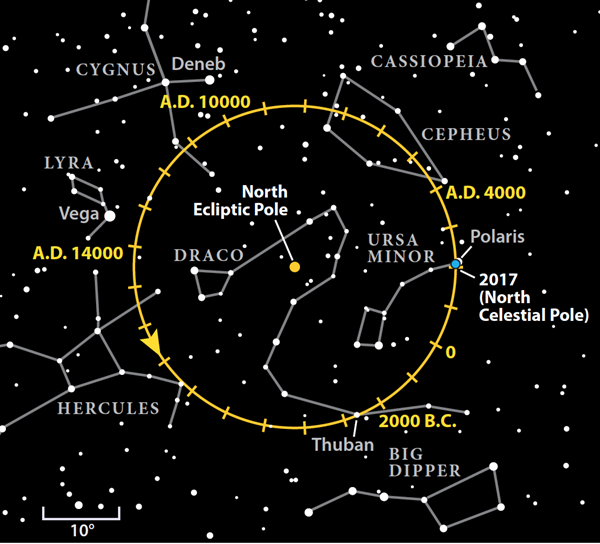Q: Earth’s axis is tilted 23.5° with respect to the Earth-Sun plane. What factors contribute to its “wobble” over extended periods?
A: Astronomers call the wobble of Earth’s axis precession. While most of us are familiar with our planet’s primary motions — rotation (spinning once a day) and revolution (orbiting the Sun once a year) — few are aware of precession. To see this characteristic vividly demonstrated, observe a spinning top or gyroscope. Its tilted axis of rotation gyrates in a circular motion, sweeping out a cone-shaped area in the process.
You can cause a top or gyroscope to precess by gently tapping it while it’s spinning. The “tap” that causes Earth’s axis to precess is the gravitational pull from the Sun, the Moon, and, to a much lesser extent, the planets. Gravity alone, however, won’t do the trick. But it just so happens that Earth has a slight equatorial bulge, and it’s this bulge that gets the gravitational tug. In other words, if our planet were a perfect sphere, there would be no precession.
While a top or gyroscope might precess several times each second, a single precession of Earth’s axis takes nearly 26,000 years (25,772 years, to be exact). The effects — changes in our “pole” stars, a shift in the celestial coordinates of right ascension and declination, and a westward drift of the solstices and equinoxes — are so gradual that most changes take decades to be noticed. No wonder precession is one of Earth’s “unknown” motions.
Contributing Editor










